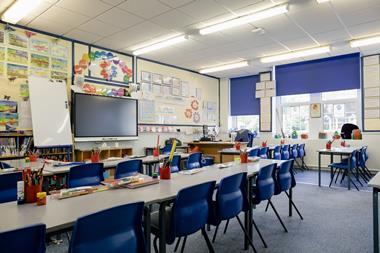For a long time, production site managers have been concerned with risk management as applied to quality, reliability, and health and safety in the workplace. More recently, however, risk management has attracted the attention of professionals in other areas.
- Project managers would not contemplate beginning a project without their version of a proper risk management process, applied from the perspective of all parties involved in the project.
- Procurement managers are in the process of recruiting their own risk management specialists to deal with the specific exposures of logistics channels.
- Legal counsels are clearly looking beyond the establishment of contracts, to include the management of legal risk within the scope of their responsibilities.
- Most finance directors have established credit managers to inquire into their clients' and suppliers' solvency, and have long expected their treasurer to make sure of their own solvency and chosen long term financing in balancing risk and return. The new ART and complex financial mechanisms involving capital markets obviously pertain to the realm of financial strategy.
- Internal auditors are no longer satisfied with auditing the risk management process at the operational level, but are clearly seeking a new legitimacy through their involvement in the definition of the risk management strategy.
They would like to concede only health and safety to the field managers, and insurance purchasing and claim management to the risk manager.
However, who on the board has the skills required to take all risks (upside as well as downside) into account in the global equation to define and implement a long term sustainable strategy? Knowing how to segregate rewards from potential penalties is after all a basic skill of risk management professionals. All that they have to learn is how to use it in a broader framework, in order to master a management of risk that could be called integrated, global, or holistic.
Managing risk is clearly an essential part of management. Many executives in France were first woken up to its importance by their legal counsels, who were among the early whistleblowers in the boardrooms, after analysing the increasing burden placed on directors through legal evolution in both France and Europe generally. In the UK, risk management moved higher up the agenda after publication of the Combined Code on Corporate Governance.
However, those who view the stress on the importance of risk management as a relatively recent phenomenon might be astonished to read a book published by Henri Fayol, French engineer and founder of a large firm. As early as 1898, he identified security as one of the six main functions in any organisation. He meant protecting both men and assets, but this could easily be translated into protecting the firm's objectives. The security head or director imagined by Fayol is undoubtedly the ancestor of our newly-discovered corporate risk officer, while Fayol clearly also envisioned the extent of what we now call corporate governance.
Core competencies
It may be possible to merge the approaches of professional organisations who are specialised in different aspects of the risk management process, into a single document. I suggest that the competencies would be split into four areas, three of which are common to all risk management professionals wherever they operate, with the fourth alone requiring specific knowledge of a given area of action.
This could serve as a template, with the fourth part being adapted to the type of organisation concerned. The main advantage of this approach would be to stress the similarities of the risk management function, whatever the organisation, without undermining the specifics. This could lead to a more open field of job opportunities for all risk management professionals, who could shift from one sector to another more easily.
The proposed four areas of core competence are:
1 GENERAL MANAGEMENT - human, physical, partnership up and downstream, financial
2 LEADERSHIP AND COMMUNICATION - ability to manage a project or a group, monitor the work of a commission and to possess communication skills that enable the candidate to be an effective communicator with all stakeholders
3 RISK MANAGEMENT PROCESS. This would include:
- DIAGNOSTIC AND RISK MAPPING: the ability to translate the knowledge of the organisation's goals and resources into a complete risk map through a systematic exposure diagnostic process (identification and evaluation)
- RISK TREATMENT: sound understanding and operational knowledge of all risk treatment instruments (risk control as well as risk financing) and capacity to design and implement a business plan for risk management, in which proposed actions can be evaluated (and possibly measured)
- AUDIT AND MONITORING RESULTS: ability to monitor results both in and outside the entity, as well as to make progress in risk management methods and tools and implement them to improve the risk management programme
4 SPECIFIC TO EACH SECTOR - the relevant legal framework, relationship with economic partners, environment, governance, for the sector.
Developments in France
In 1989, the 'Institut de Management des risques' (IMR), a post graduate programme of the Bordeaux Business School, was founded with the approval of FERMA and the French associations of risk managers. For nine years, the Associate in Risk Management (ARM) designation became the backbone of the IMR master programme.
In 1992, the first post-graduate programme to offer a global approach to risk management was founded at the University of Paris 1, with a transversal curriculum encompassing geography, law, economy, accounting and finances, and cindynics (science of danger). It was later further entrenched in risk management with an opening to the French ARM. The following year, the newly created AMRAE (French risk managers association) under contract with the Insurance Institute of America (IIA) offered the ARM programme in French for the training of risk management professionals. And in 2003, the ARM programme found a permanent home in the CARM (Cercle des Associes en Risk Management) Institute to further develop research and executive training with the European Fellow in Applied Risk Management (EFARM) designation.
Most of these programmes are focused on the professionals of risk management, be they risk managers, brokers, consultants or insurers. They cater either to current professionals (further education and training) or to students who will work as professionals (initial education).
So far, too little attention has been given to training executives and elected officials, whose strategic decisions confront them more and more with the world of risk management. It is true that business and engineering schools, as well as post graduate programmes in universities, recognise the growing importance of the universe of risks. However, even for the enlightened few, most risk management courses are limited and tend to concentrate on a specific aspect: safety for engineers, financial risks for finance specialists and liabilities for lawyers. Therefore they fall short of a comprehensive approach to global or holistic risk management.
There is still a long road ahead before strategic risk management is integrated as a basic tool for all professionals, like marketing or computer science.
However, since its creation, the CARM Institute has embraced as its mission the need to ensure that the French curriculum of the ARM truly develops a global and strategic approach to risk management in each student, while keeping in mind the details of daily operations that are needed to ensure long term security for all organisations and their stakeholders.
The academic community is also fast awakening to the need for a new approach to risk management education in France. Recent years have seen a mushrooming of programmes in engineering schools and in post graduate programmes.
Several Diplomes d'Etudes Superieures Specialisees (DESS) have followed the historical Institutes of Insurance, more than 30 years old and the DESS de 'Gestion Globale des Risques et des Crises - Cindyniques' created at the Sorbonne ten years ago. The newest addition is a DESS specialising in public entity risk management at Lyon University, which started in the fall of 2002. There is also discussion for the opening of two further DESS in Paris, specialising in healthcare risk management.
More than 15 engineering schools have opened post graduate programmes in risk management, but they tend to specialise in loss control. A dozen business schools offer such programmes too, but they are mostly focused on financial risks. More recently, the 'Grandes Ecoles' and the post-graduate programmes in the universities, whether in sciences or economics, have realised they are confronted with three missions:
- educating all students in the essentials of risk management
- educating future risk management professionals
- proposing further education programmes to train the existing population of engineers and managers who have not been trained in risk management.
The first mission can be achieved only if all students attend a compulsory course in cindynics. This would ensure that all students, whatever their professional career might be, would naturally use the concepts and models of cindynics as a tool kit for daily work, in the same manner that IT has become a universal tool rather than a separate discipline.
Obviously, the need for specialists, both practitioners and researchers, will still have to be met. They will be the key to furthering the understanding of the sciences of hazards and risks and ensuring that this knowledge is applied to improve the techniques used in organisations to establish risk diagnostics, treatment and audit.
As far as practitioners are concerned, it will be essential that all students are exposed to risk in the course of their case studies and internship, so that their thesis and report for graduation all include a risk management dimension. Researchers will need trans-disciplinary doctoral schools with risks at the centre of their activity. These will have to establish open structures where teams including engineers, lawyers, management specialists, mathematicians, sociologists and managing directors could work in synergy.
Such schools would become the source for the many professors and lecturers that will be needed to teach the courses required to train future generations of managers and upgrade the current generation.
One major manifestation of this new scope is the GEM (Groupe des Ecoles des Mines) through which the seven mining engineering schools in France and the Ecole Centrale of Paris are pooling their resources to develop a new common school for risk management education. This will include both risk control and risk financing in a global approach based on the cindynics model. The experiences that will be shared include the Cindy lab of Spohia-Antipolis and the Master programme currently under development in several universities in Paris to replace the previous programme, in the light of the European alignment of diplomas.
However, it would be a serious mistake to rest all research on risk solely on engineers, as mastering many disciplines is required to develop the strategic vision needed to manage risks. The Sorbonne is in the process of establishing an 'Institut de Cindyniques' to pool the resources of several universities in order to create the first doctoral school of risk management in France, where law, economy, sociology and geography, to name but a few, must be combined to offer a true global approach. A few students are in the process of writing PHD dissertations in conjunction with economic partners such as Swiss Re and the French Railway system (SNCF).
A club of excellence
Practitioners are also eager to enhance the visibility of risk management in the executive suites. This is the underlying ambition of the new EFARM designation (European Fellow in Applied Risk Management). It is conceived more as a club of excellence, where leading risk management professionals will accept as peers younger risk managers who demonstrate a 'solid command of all risk management aspects'. Already three sessions of the master classes have taken place and two jury sessions have deliberated accepting the first 10 EFARMs, who will receive their diplomas in the months ahead.
Achieving EFARM requires attending a three-day residential seminar, the Master Classes in Risk Management, with a 12 month practical exercise to demonstrate expertise through a practical risk management programme to be defended in front of a high profile jury of risk managers and academics.
While the candidate is working on his programme, he or she will be backed by a a senior risk manager, who will serve as dissertation director to help and challenge. The EFARM club of excellence should become a help to maintain the level of excellence of all its members. with a mission to help develop risk management throughout society. International connections are being developed with MONASH University in Australia and Glasgow Caledonian University in Scotland.
Will EFARM be the first key to open the doors to an International Club of Excellence in Risk Management (ICERM)? Or will the International Federation of Risk and Insurance Management Associations (IFRIMA) adopt that mission?
The answer lies in the hands of risk management professionals and academics worldwide.
Professor Jean-Paul Louisot is a professor at Universite Paris 1 - Pantheon Sorbonne, and chair of the curriculum committee, CARM Institute, Sarl, Tel: 0033 1 43 74 11 37, E-mail: jplouisot@aol.com
ASSOCIATE IN RISK MANAGEMENT
THE FRENCH CONNECTION
The Associate in Risk Management (ARM) is a professional designation targeting risk managers, their staff and service providers. It is international, professional and forward looking.
The ARM has provided students of the post-graduate programme at the Sorbonne with new exposure to risk management professionals and an opportunity for cross-fertilisation by teaming a student and professional in training through internships in large corporations, public entities and hospitals.
It is designed for
- Corporate risk managers, risk managers with public entities, healthcare providers, non-profit organisations and their staff
- Managers in insurance and reinsurance companies
- Brokers, assessors, risk management and safety consultants
- More generally, all individuals involved with risk analysis, risk control and risk financing.
The curriculum is divided into three semester-length courses, totalling 30 days of residential seminars.
ARM 54 : The Essentials of Risk Management course is the cornerstone of the programme. It provides students with a methodological framework illustrated by real life situations and case studies. It aims to develop a sound understanding of the risk management process enabling each student to implement a global approach to managing the risks for any organisation in the corporate world, the public sector, local authorities or the healthcare system.
ARM 55 : Essentials of Risk Control is a thorough review of accident causal theories and the main instruments of risk control (avoidance, prevention, reduction, segregation) with the goal of controlling exposures and reducing the degree of uncertainties of future outcomes. A special emphasis is placed upon contingency planning and crisis management. The course calls upon many high level consultants in the different fields involved.
ARM 56 : Essentials of Risk Financing reflects the fact that financial engineering and strategic financial management have become fundamental elements in risk financing. Planning for cash to survive the most severe situations is not enough, doing it in a long-term efficient manner is essential. Beyond traditional insurance and retention mechanisms such as captives, a new emphasis is placed on alternative risk financing tools.
CINDYNICS
Cindynics is the science of danger. It was first introduced in North America a few years ago during a round table at an RIMS conference in New Orleans by Georges Yves Kervern, then an executive in the French insurance industry, and Jean Jacques Duby, a leading scientist. The discussion at the RIMS round table led to the publication of the book Latest Advances in Cindynics (Economica Paris 1994).
The fundamental concepts of Cindynics have been drawn from the best risk management practices found in large multinational industrial companies.
Since then, the same concepts have been applied to other domains, mainly public health (systemic psychotherapy), local authorities, government, emergency preparedness and natural catastrophes.
Cindynic Knowledge Management, the data processing of information used in risk identification, assessment, mitigation and transfer is now introduced in intranets and computerised in business organisations.
The Cindynics approach rests on a set of stakeholder networks. Each network is captured by a description developed on five Cindynic Spaces (Hyperspace of Danger) focused on:
- FACTS
- MODELS
- GOALS
- RULES AND STANDARDS
- VALUES.
Any set of networks is more or less prone to generation accidents or catastrophes. This tendency is described in cindynics by a function defined on the set of networks. This function of a set is isomorphic to the concept of propensity proposed by the epistemologist Karl Popper in his book A World of Propensities.
The science can be split into four main headings:
- CINDYNIC PHILOSOPHY
- CINDYNIC EPISTEMOLOGY
- CINDYNIC PHENOMENOLOGY
- CINDYNIC PSYCHO-SOCIOLOGY
Cindynic philosophy explores the conceptual links between values and moral standards and the balance between, on one side, scientific efforts, and on the other side, value systems. Technologies are developing responses to certain perils, but simultaneously generating new perils that are anathema to sectors of public opinion. It faces the challenge of interpreting and defining new basic concepts for confidence, trust, governance, precaution, risk taking and decision-making in uncertain or ambiguous conditions.
The task for Cindynic epistemology is to legitimise the best practices in emergency preparedness, crisis management and risk prevention. Already a series of Cindynic axioms has been put forward. Description theory has been used to legitimise the basic tools used in Cindynic surveys or audits, for instance, the Cindynic situation concept as a set of interconnected networks of actors and the hyperspace of danger as the product of five spaces.
Cindynic phenomenology focuses on the elaboration, or non elaboration, of representations of existing perils/hazards in consciousness.
Cindynic psycho-sociology focuses on the denial tendency of individuals and communities. This tendency explains the widespread blindness or negation/underestimation of perils and hazards.
Cindynics is developed in a specialised laboratory: Pole Cindyniques in Sophia Antipolis, France. Further information is available at www.cindy.cma.fr



















